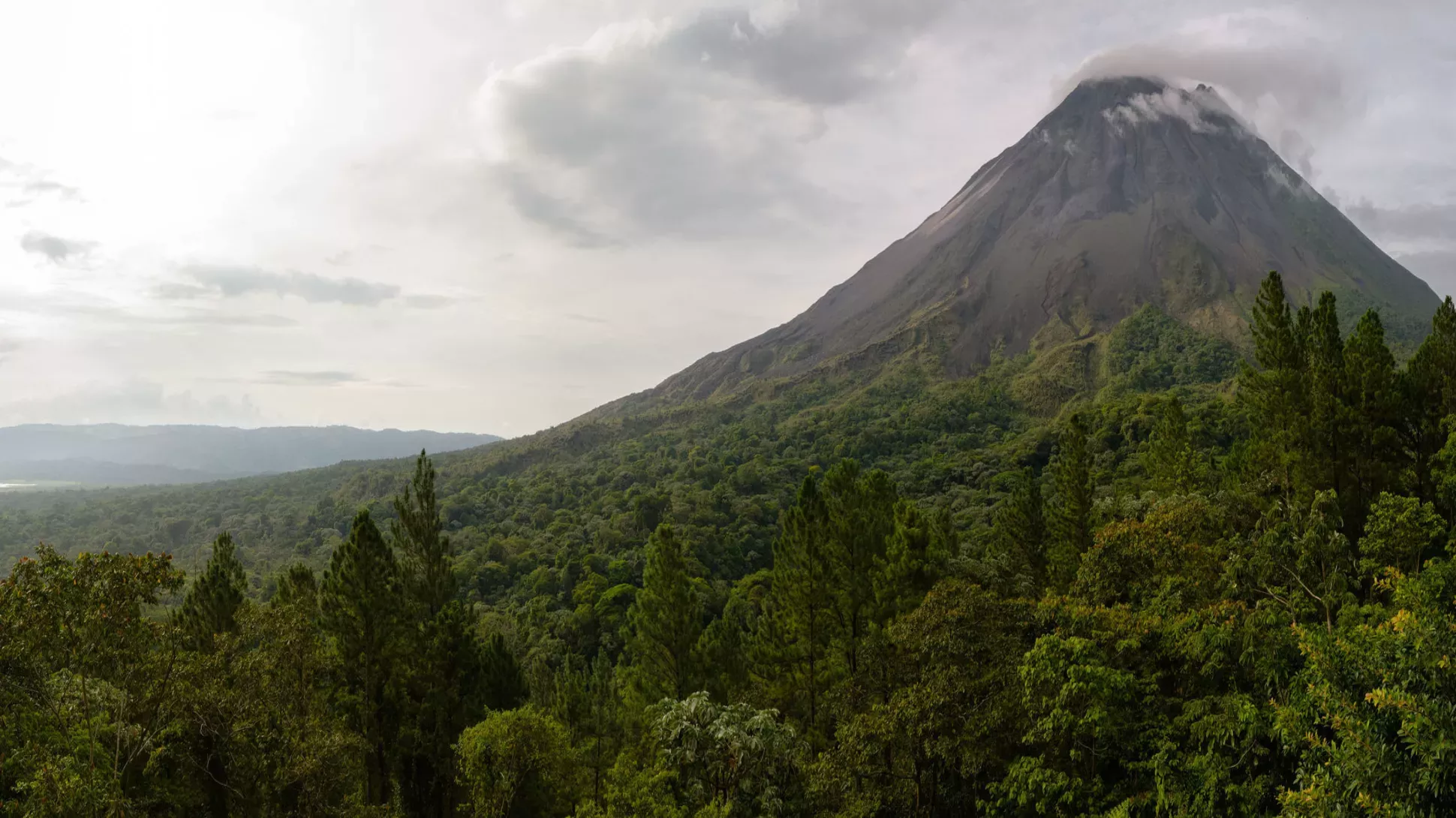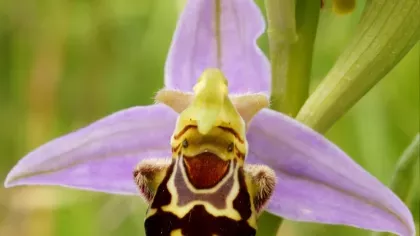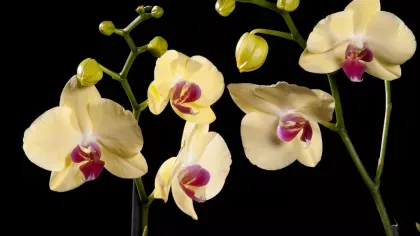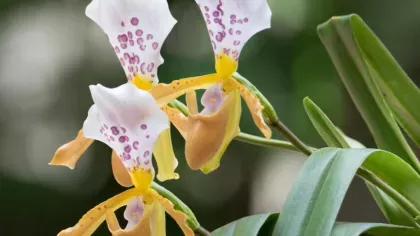31 January 2022
Top 10 natural wonders of Costa Rica
This tropical paradise is teeming with wildlife, from sea turtles and sloths to coffee plants and Dracula orchids.

Costa Rica is world-renowned for its rich and varied wildlife, making it one of the most biodiverse places on Earth.
Though measuring only one fifth the size of the UK and occupying just 0.1% of the Earth’s total landmass, Costa Rica is home to 6% of the world’s known plant, animal and fungal species.
At this year’s orchid festival at Kew, journey through our Costa Rican paradise, featuring stunning horticultural displays that bring this biodiversity hotspot to life.
Here we look at 10 exotic treasures that can be found in this beautiful and biodiverse part of the world.

1. Jaguar
The jaguar or ‘el jaguar’ (Panthera onca) is Costa Rica’s largest wild cat, growing up to 2m long.
Jaguars mostly hunt on their own at night, stalking and pouncing on prey. They’re carnivores, with a taste for sea turtles, monkeys, sloths and other tropical rainforest species.
In Costa Rica, jaguars are mostly found in nature reserves and parks where they’re protected from illegal hunting and habitat loss that threaten their survival.

2. Sloth
Costa Rica isn’t just famous for its stunning beaches and lush rainforests, but its adorable sloths too!
Two species of sloth (‘el perezoso’) can be found in Costa Rica: Hoffman’s two-toed sloth (Choloepus hoffmanni) and the brown-throated sloth (Bradypus variegatus).
These unique creatures are known for their slow and sleepy way of life upside down in the treetops, but did you know they can also swim?


3. Honduran white bat
Costa Rica is home to over a hundred bat species; the Honduran white bat (Ectophylla alba) is one of the cutest.
These tiny fluff balls shelter from the rain, hot sun and predators beneath leaf ‘tents’ which they mould carefully with their teeth.
The Honduran white bat feasts on figs, preferring a single species: Ficus colubrinae.

4. Sea turtles
Four species of turtle nest on Costa Rica’s Caribbean and Pacific coasts — leatherback, green, hawksbill, and olive ridley.
Year after year, female turtles come ashore to lay their eggs in shallow nests dug into the sand.
Several months later, the baby turtles hatch and make their journey to the sea.
This natural spectacle is one of the country’s most popular ecotourism attractions.

5. Resplendent quetzal
Deep within Costa Rica’s cloud forest canopy lives the elusive resplendent queztal (Pharomachrus mocinno).
Famous for the long, emerald tail feathers that adorn male birds, Mayan kings were said to desire resplendent queztal’s more than gold.
During the mating season the males attract potential mates with their loud calls and swooping, elegant tail feathers.
Once quetzals mate, they form strong bonds, working together to provide care for their chicks.

6. Coffee
Coffee is the world’s favourite drink.
We drink a staggering 2.25 billion cups per day and over 100 million people depend on coffee for their livelihoods.
It is made from the roasted seeds of coffee (Coffea) plants, most commonly arabica coffee.
Costa Rica has exported some of the world’s finest coffee, offering a vast spectrum of flavours.
As the country’s largest agricultural product, Costa Rica is a major player in the coffee market.
Come and see this popular plant for yourself in our beautiful Palm House.
7. Cacao trees
Alongside its thriving coffee industry, Costa Rica produces some of the world’s best chocolate.
This popular product, which has been eaten by humans for more than 5,000 years, is made from the seeds of cacao trees (Theobroma cacao) that thrive in tropical rainforests.
More than just a ‘food of the gods’ (Theobroma), cocoa is used to treat a variety of health conditions including high blood pressure and digestive complaints.
It’s also known to increase endorphins, the hormone which boosts happiness – so keep snacking!
Did you know? Cacao beans were so highly valued by the Aztecs that they were used as currency.
We currently have six cacao trees growing in the Palm House and the Princess of Wales Conservatory, so come pay them a visit next time you’re here.
8. Monkeys
One of Costa Rica’s four species of monkey, the white-faced capuchin (Cebus imitator), is no stranger to the cacao tree.
They harvest ripe cacao pods but, curiously, only take a few bites before tossing the pod to the forest floor where it begins to rot.
The capuchin returns a few days later for what it really wants — the protein-rich maggots in the rotting pod.
This unusual behaviour does the cacao tree a big favour by helping to disperse their seeds far and wide.

9. Guarianthe skinneri
Costa Rica is home to a beautiful variety of orchids that come in many different shapes and colours.
Amongst the 1,600 orchid species native to Costa Rica, is the country’s national flower – Guarianthe skinneri.
Its exquisite blooms represent the elegance of nature, as well as the beauty of Costa Rican people, and are thought to bring fortune and good luck.
Guarianthe skinneri features prominently in Easter celebrations, often adorning churches, houses, parade floats, hats and hair, as it usually blooms in March, around the time of Lent.

10. Dracula orchids
Like many of its peers, the Dracula orchid has mastered the art of deception to lure pollinators.
To its pollinators, tiny fungi-dwelling flies, the Dracula orchid looks and smells like their favourite mushroom, fooling them into frequently visiting and inadvertently pollinating the flower.
Dracula orchids are mostly found dwelling high up in cloud forests on the surface of trees.
Did you know? Strangely, the genus name Dracula has nothing to do with vampires and everything to do with dragons — the word translates to 'a little dragon', referencing their dragon-like appearance.




